What is a sewage protection zone: legal requirements and
Prohibition signs near certain objects for many of us are not new, they often come across. However, the fact that there is a special security zone of the sewage system is not known to everyone. Most will even be surprised to learn that such territories exist at all.
A reasonable question may arise, and in fact, what could be of value there? But, it most likely refers to the townsfolk, and not to people professionally engaged in cleaning dirty water. This article will be about the consequences of a wrong attitude to such territories, actions taken to protect the environment.

We will understand the concepts
| Secured territory | The security zone of sewer networks is the territory on which are located:
|
| Prohibited |
|
| Security Zone Limits | They have their limits depending on:
You can find out the exact limits of the sewer protection zone in local authorities. |
Consequences of not knowing the protected area
Alas, but we are not so rarely faced with damage to sewer systems, laid under the ground. Statistics claim that such incidents exceed emergency situations on water, electricity and communications lines.
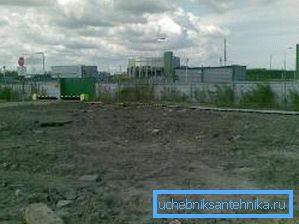
For the most part, this is due to the negligence of their duties as earthworks and construction managers. They violate the water supply and sewage protection zones, which often cause serious damage to drainage systems.
Why it happens? Ignoring the warning signs installed on the border of such territories, which must be established by the companies operating the facility.

At the same time, if the installation of water signs is registered in the Water Code, and other special signs - in laws and regulations, the signs signaling the protection zone of the sewage collector are not yet documented. This leads to damage to communications.
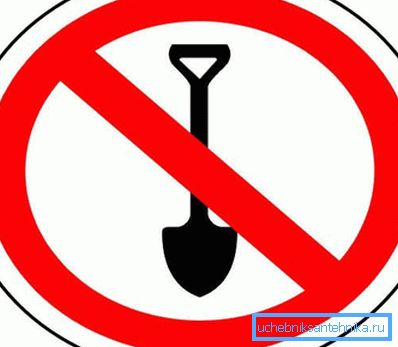
In this case, the responsibility will be borne by:
- when installing the sign - the manufacturer;
- in the absence of a mark - operating company.
Tip: when working in a possible protection zone, remember that even if the rules for placing warning signs of this type have not yet been established by law, if the sewer network is damaged, the perpetrator falls within the scope of the Administrative Code.
If actions have led to adverse effects on the environment, this type of offense bears more serious responsibility.
Therefore, before embarking on such work, the instruction recommends:
- Well explore the area where you plan to conduct work.
- Get in a local company engaged in water supply and sewage systems a detailed analysis of the site, where security zones and sewer lines will be marked.
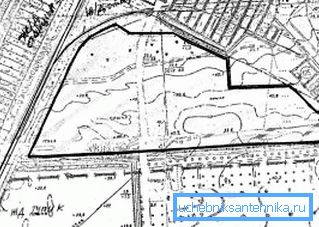
- The best option is to take a copy of the plan for review.
- When there is a security zone in the territory of future works, it is necessary to take permission to carry them out.
Regulatory requirements
Below we consider the permitted and prohibited actions that can be conducted near sewer networks. All such questions are governed by the regulatory requirements of the SNiP.
It should be noted that sanitary rules and regulations are given only in general requirements and regulations. Rules and values for a particular region need to be recognized in local government.
When the environmental conditions are normal, the protection zone of the sewer pressure system on the sides of the sewer is 5 m.
By decree of urban companies operating water supply and sewage, on open areas of land and street passages, the protected area is allowed as follows:
- if the collector does not exceed O600 mm - from the walls of the pipeline or from the most extreme projecting point of construction, 5 m each side;
- if O1000 mm is exceeded - it is necessary to provide an area of 10-25 m closed from work on the sides of the collector or structures, depending on the soil and purpose of the network.
At the same time in the protected area is prohibited:
- to build permanent or temporary buildings;
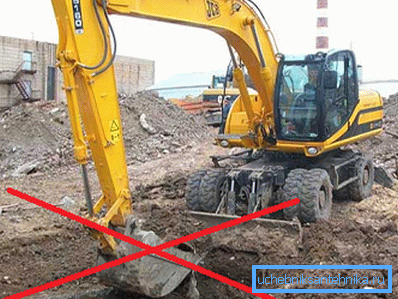
- make parking spaces for vehicles;
- allocate space for landfills;
- planting trees and shrubs with your own hands closer than 3 m from the collector;
- change the soil level by adding or cutting it;
- create a temporary or permanent pavement of reinforced concrete slabs;
- use shock mechanisms from the sewer structure closer than 15 m;
- block the passage to sewer networks, wells and structures;
- to lay the subway at a distance of less than 20 m from the sewers used.
What the Worker Should Know
Properly working sewer systems - a guarantee of good life support of citizens.
In carrying out any work in the open territory of the protected zone, their organizer must:
- strictly observe the rules and regulations, otherwise the price of negligence may be too high;
- ensure the integrity and safety of sewers;
- in case of detection of inconsistencies associated with the discrepancy of the analysis provided by water and sewer companies, and the actual state of affairs at the work site, suspend activities until a subsequent decision;
- to collect garbage, ice and snow in time so that there is free access to the sewage facilities;
- invite a representative of the authority that issued the permit to the commission on acceptance of the object.
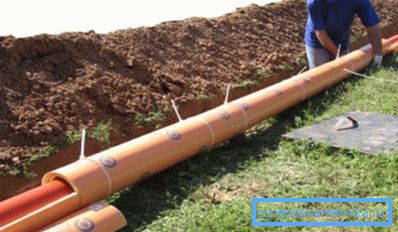
The territory of the security zone
According to the SNiP, the protection area under normal conditions is 5 m from the walls of the sewer. This value is used for pressure and gravity drainage systems.
In addition, the area of the zone can be affected by environmental conditions, which include:
- high seismic risk area;
- low average annual temperature in the region;
- weakness and high soil moisture.
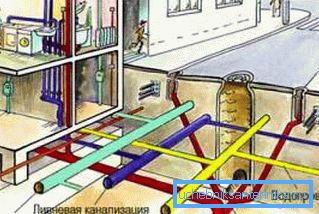
Note! In this case, local governments can increase the 5-meter protected area.
The security zone of the storm sewage system according to SNiP is established in the same way. In this case, its purpose is to receive conditionally clean atmospheric and industrial wastewater that does not need to be cleaned before being discharged into the sewer system.
In this case, damage to storm sewers can lead to:
- improper use of the protected area;
- technical violations in the installation of sewer pipes.
Tip: when creating a stormwater and other types of sewer networks should comply with the requirements and technical conditions. Minor deviations are allowed, but they should not be on the operation of the system.
Conclusion
The article was told that it is a security zone sewer, located within the city limits. This is a very important issue of ensuring the biological safety of the territories and, accordingly, of its inhabitants.
Any work within these zones must be strictly regulated and strictly observed. The video in this article will help you find additional information on this topic.